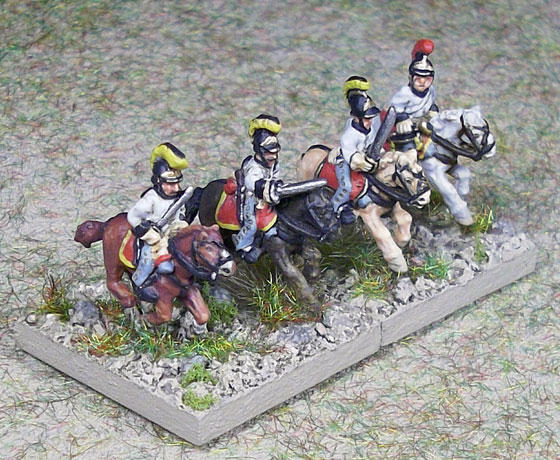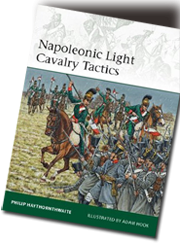
Napoleonic Light Cavalry Tactics

didn’t seem right to base light cavalry in ‘close files’ boot-to-boot.
It’s easy to loose count of the number of references to the light
cavalry charge being different from the charge of the heavy
cavalry. To summarise: yes, Napoleonic light cavalry formed up
in ‘close files’ but also in ‘half-open files’ and most of their
encounters with the enemy – skirmishing, charging, pursuing –
were in a looser formation than the slower-moving boot-to-
boot formations of their heavier brethren. Basing them as such
for the 10mm tabletop seemed the way to go.
I had been counting the days to 20 December 2013, the publishing date
of Philip Haythornthwaite’s Napoleonic Light Cavalry Tactics. During the
Christmas holidays, I was chuffed so near to the publishing date to
order a copy for a saving of nearly 50%. My copy was delivered at the
beginning of January. Almost instantly, it confirmed my feelings of
how I should base my Napoleonic light cavalry. Back in the 70s, Bruce
Quarrie recommended basing light cavalry in a looser formation than
heavy or line cavalry, advising that two light cavalry figures should
cover the same base-width as three heavy cavalry. Since those days it
had, however, become usual to base light cavalry boot-to-boot like
other Napoleonic cavalry. Most contemporary rule-sets didn’t include
any reason not to. However, I wanted to follow Bruce Quarrie’s advice
and base just two light cavalry figures on the same 25mm frontage as
three heavy cavalry. I also thought two figures to a base would look
much better when the light cavalry bases
were spread across the tabletop in extended
order as a light cavalry screen – and why I
originally wanted to mount light cavalry on
round bases (see Post 37).
Reading Philip Haythornthwaite’s book, it

The original four figures of Rosenberg
Chevauleger Regiment No. 6 from
Post 95 based as light cavalry, two
figures to a 25mm base.





































































































POST 129
129












